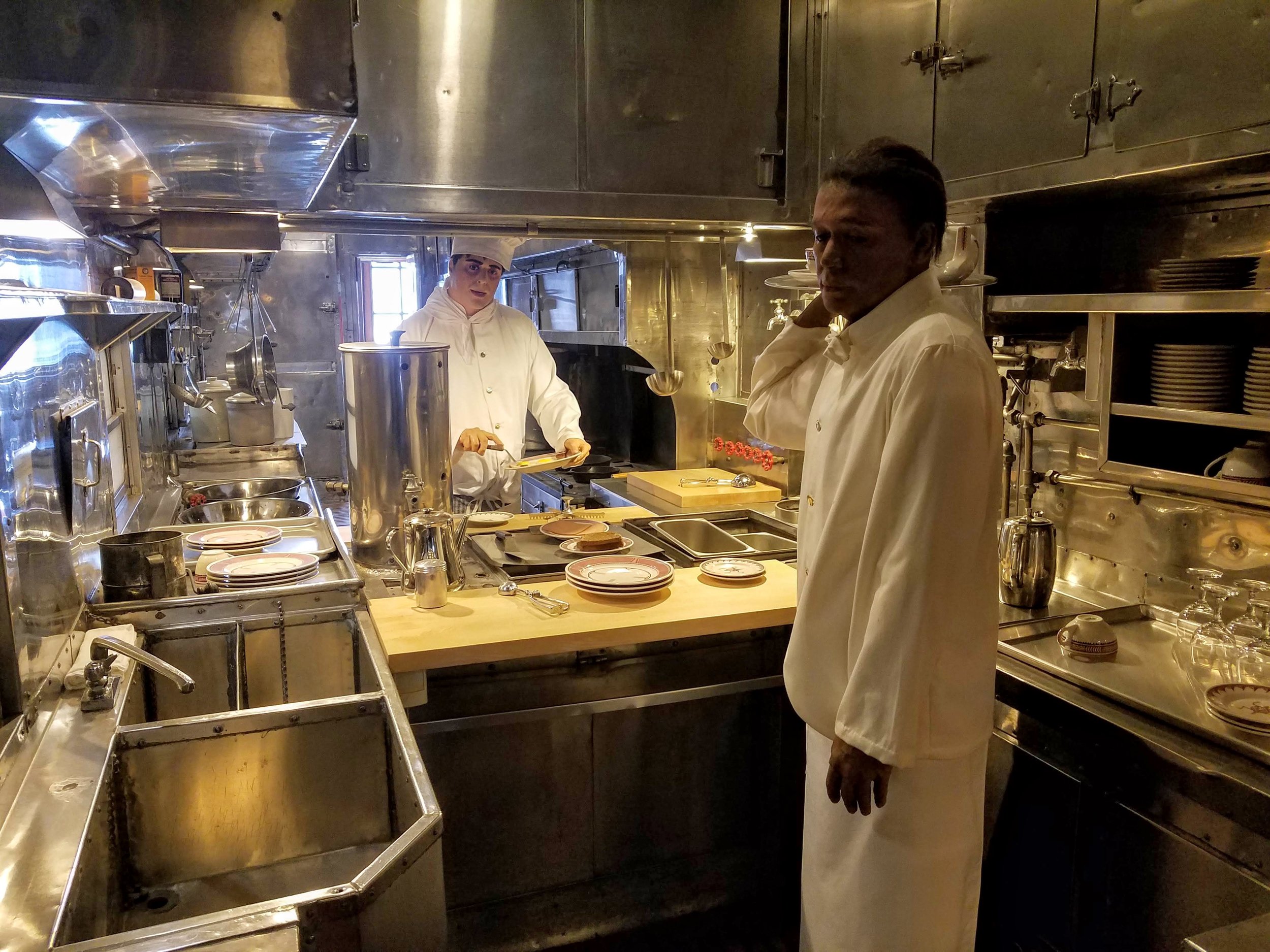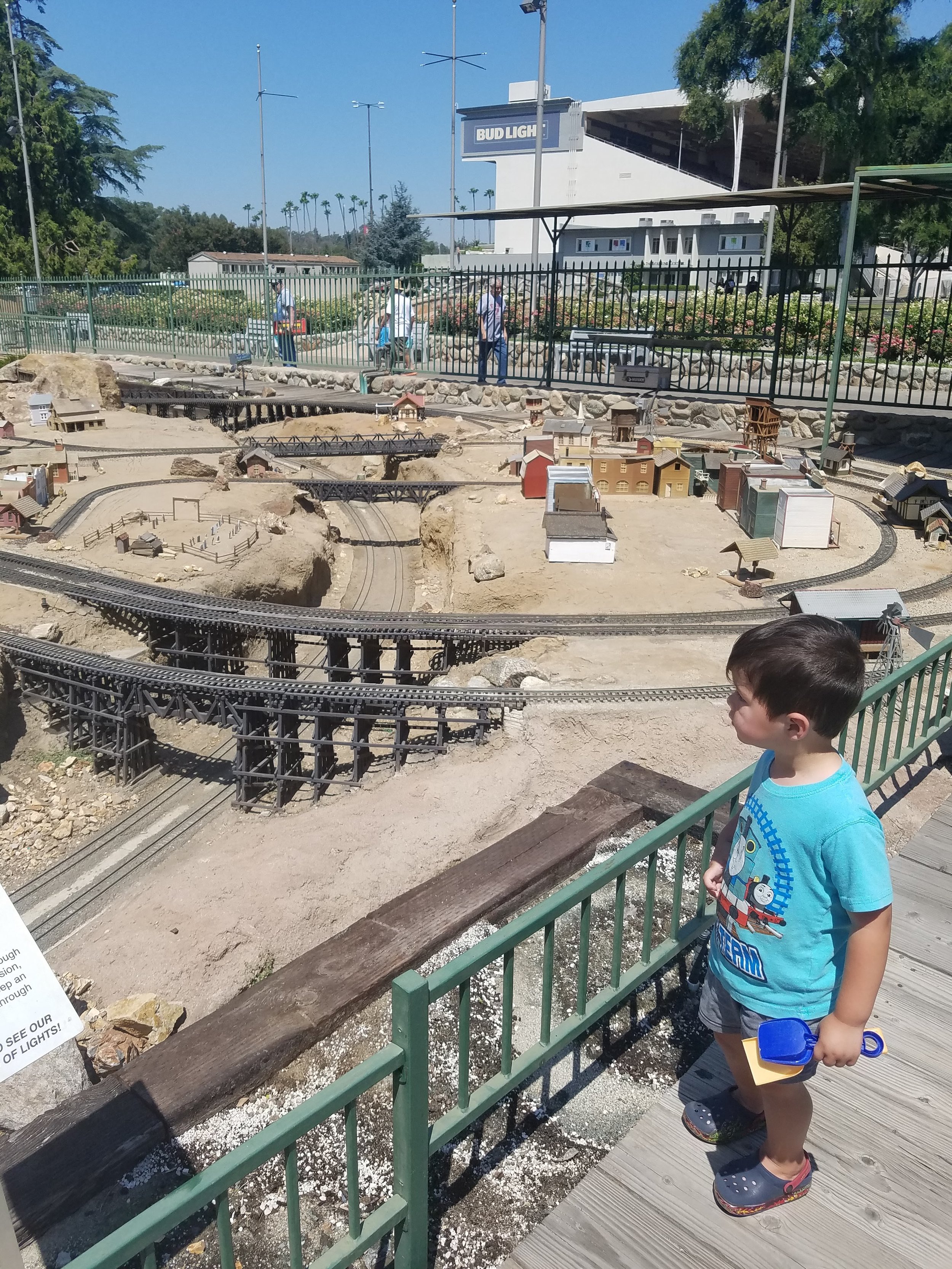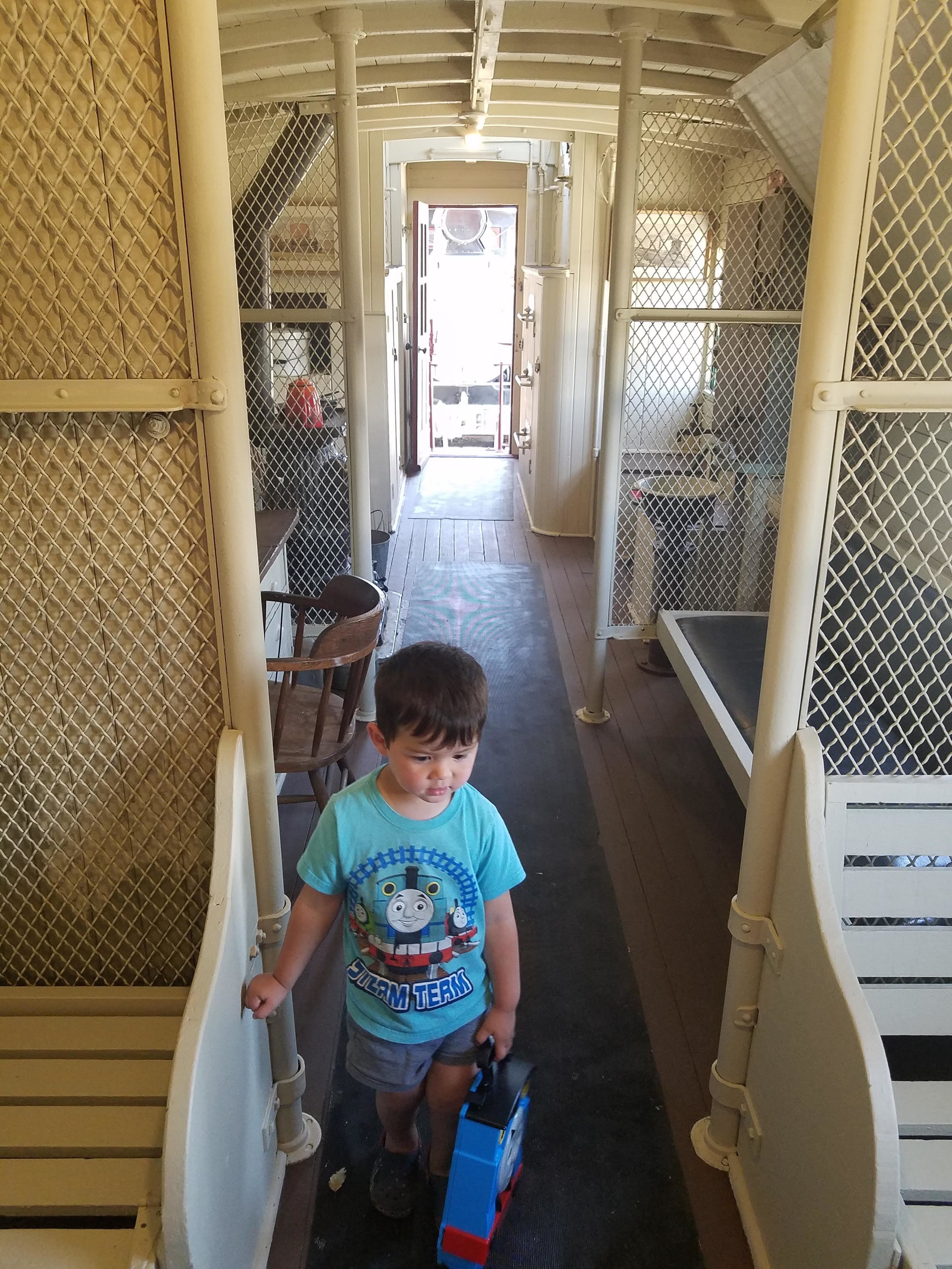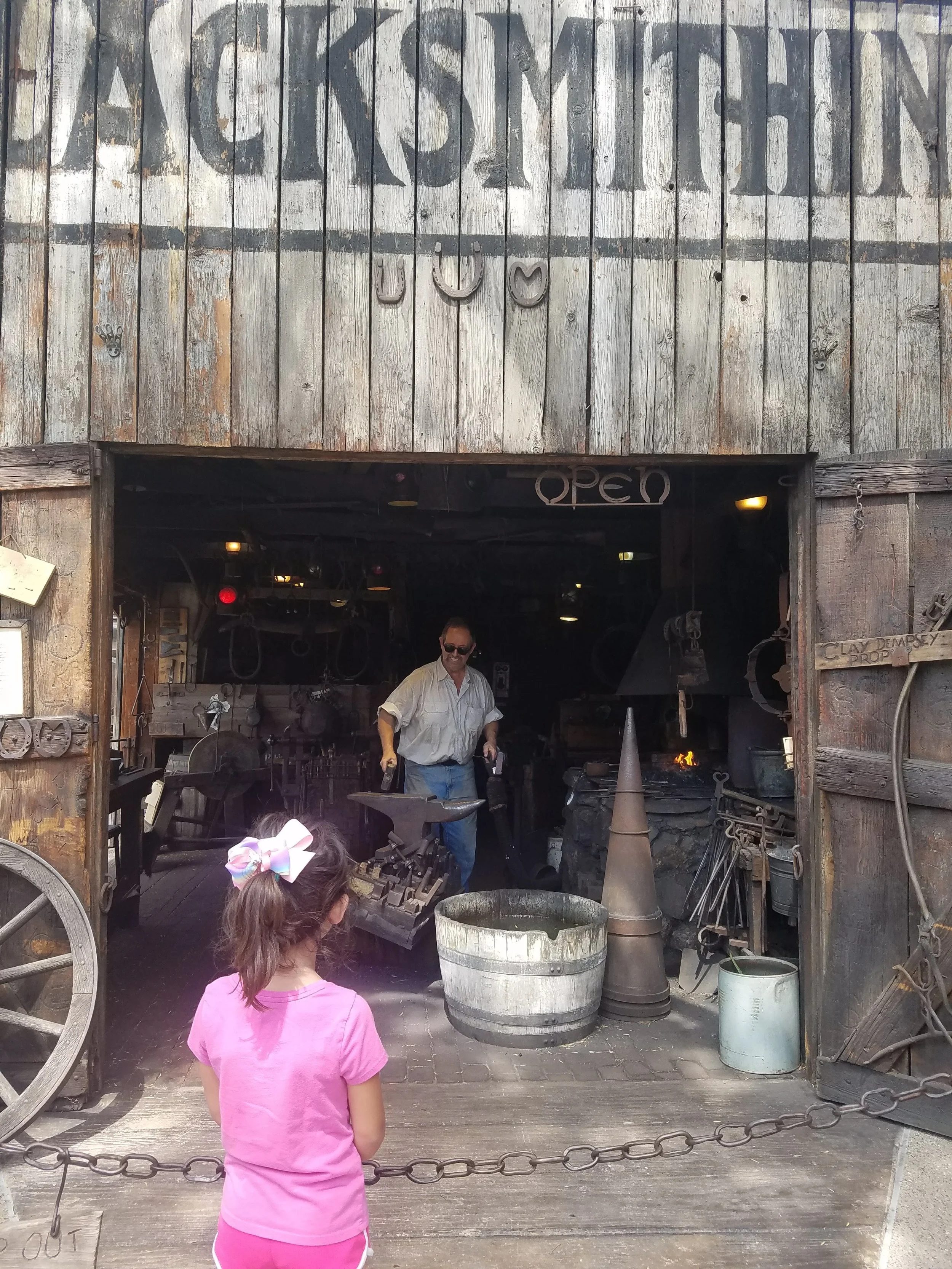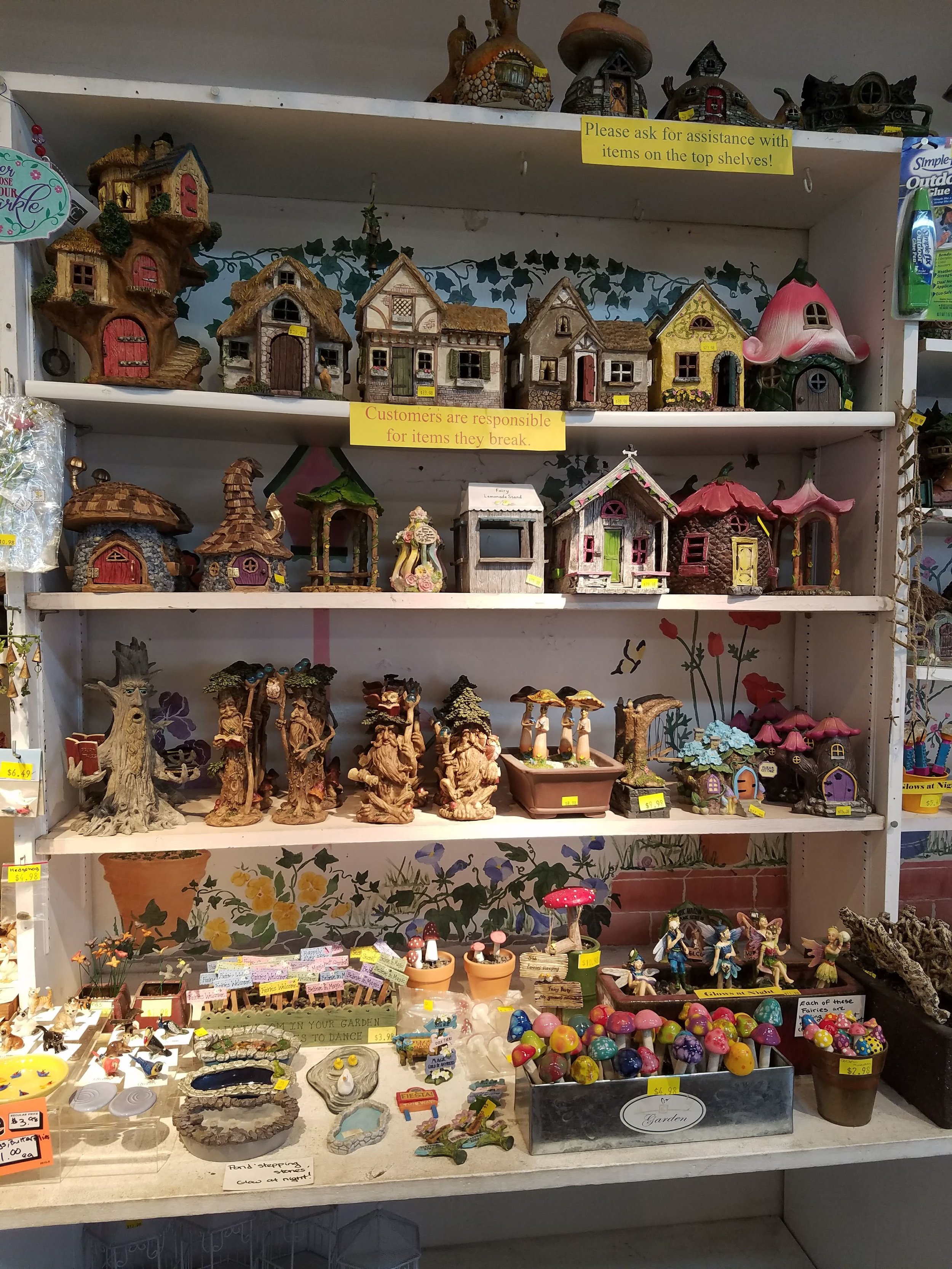The California State Railroad Museum in Sacramento has something to appeal to all of its visitors. Any train enthusiast will be dazzled by the collection. Opened in 1981, they have amassed nineteen steam locomotives that are kept in immaculate condition. With polished brass and stained wood, they look as sharp as the day they were first wheel out of the factory. For kids, it offers lots of hands-on opportunities and plenty of walk through exhibits as well as a collection of model trains upstairs. For really little kids, there is a room full of Thomas the Tank Engine wooden trains they are allowed to play with. Any surly teenagers who have been dragged along on a family outing should be able to appreciate that the collection is indoors and climate controlled allowing for a comfortable place to wander despite the worst that Sacramento weather can deal out. As striking as the collection is however, it really is a place that gets beyond just the celebration of machinery. The museum’s displays are well thought out and weave in a very human story among its exhibits. It’s a place that will leave anyone who loves trains satisfied, but it uses the trains to tell the stories of people that could have been lost in time.
The first exhibit in the hall tells the story of the First Intercontinental Railway and culminates with the driving of the golden spike at Promontory Point, Utah. While the obvious choice would have been to focus on Leland Stanford, the museum carefully includes the story of the Chinese who made his vision a reality. Depending on who is telling the story, Leland Stanford was either a captain of industry and a robber baron. In his lifetime, he built a vertically integrated empire that involved the railroads, banking, insurance, as well as an international steamship operation. He would eventually command enough political capital to serve as the governor of California for two years. On paper, he is the type of person a free market capitalists would celebrate. While he may be credited with being one of the masterminds behind the First Transcontinental Railroad, the reality is that his efforts would have gone nowhere without exploiting workers. During his time as governor, he spoke out publicly against the influx of Chinese into the United States of America. At the same time, he knowingly imported Chinese laborers and used them to complete the crowning achievement of his empire. The museum makes sure that their story is not left out.
At the entry of the exhibit, a life sized diorama features the locomotive The Gov Stanford, a Central Pacific locomotive used in the construction of the Intercontinental Railroad. It looks dazzling as it sits poised on the tracks, waiting to pass through a mountain tunnel that appears to still be under construction. Nearby are three nameless Chinese laborers, hanging off the side of a mountain as they carve through stone in order to make Leland Stanford’s dream of connecting the United States of America a reality. The end of that exhibit features a painting by Thomas Hill called The Last Spike. Completed in 1881, Hill included two Chinese laborers at the center of the painting. Both men lean on shovels and look at the powerful men congratulating themselves while standing on the backs of others.
Chinese workers are not the only people who the museum celebrates. In the back of the roundhouse, the museum displays two walk through Pullman Coaches. Finely appointed, visitors can get a feel for the level of opulence travelers once experienced. The sleeper car actually rocks to provide the sensation of riding down the rails. In the dining car, tables are set with fine china where passengers dined as the countryside slipped by. Quite honestly, travel in a Pullman car seems like it would be a wonderful way to cross the country.
However, that level of elegance came at a very human cost. One person was commissioned to look after the passengers’ needs. He was required to be constantly available and permanently invisible. Those in his care would refer to him as George, the same name as his employer, George Pullman. Much like Leland Stanford, George Pullman built an empire on cheap labor. Seeking a way to market luxury train travel to the middle class, he sought out former slaves to provide travelers with a sense of opulence by railroad providing them with a devoted servant for the duration of the trip. Porters were required to work long days and sacrifice their own identities in order for the middle class to feel some of the creature comforts. The workers relied on tips because the wages paid their employer were low.
The two cars are remarkably well preserved and could easily cause a visitor to get nostalgic for the good old days. However, the museum makes sure to include African American mannequins integrated into the exhibit in order serve as a reminder of the army of men who worked long hours for low pay on the trains.
The California Railroad Museum would be a great outing just based on the strength of its collection. However, the fact that it does not attempt to sweeten the past is really what really makes it a museum instead of just a display of archaic machinery.
This article is based on a visit to the California State Railroad Museum on March 4, 2019.
California State Railroad Museum
125 I Street
Sacramento, CA 95814
916 445-7387
Interested in seeing trains? When in Southern California, make sure to visit Angel’s Flight and The Great Train Show when it touches down at that Fairplex in Pomona.









